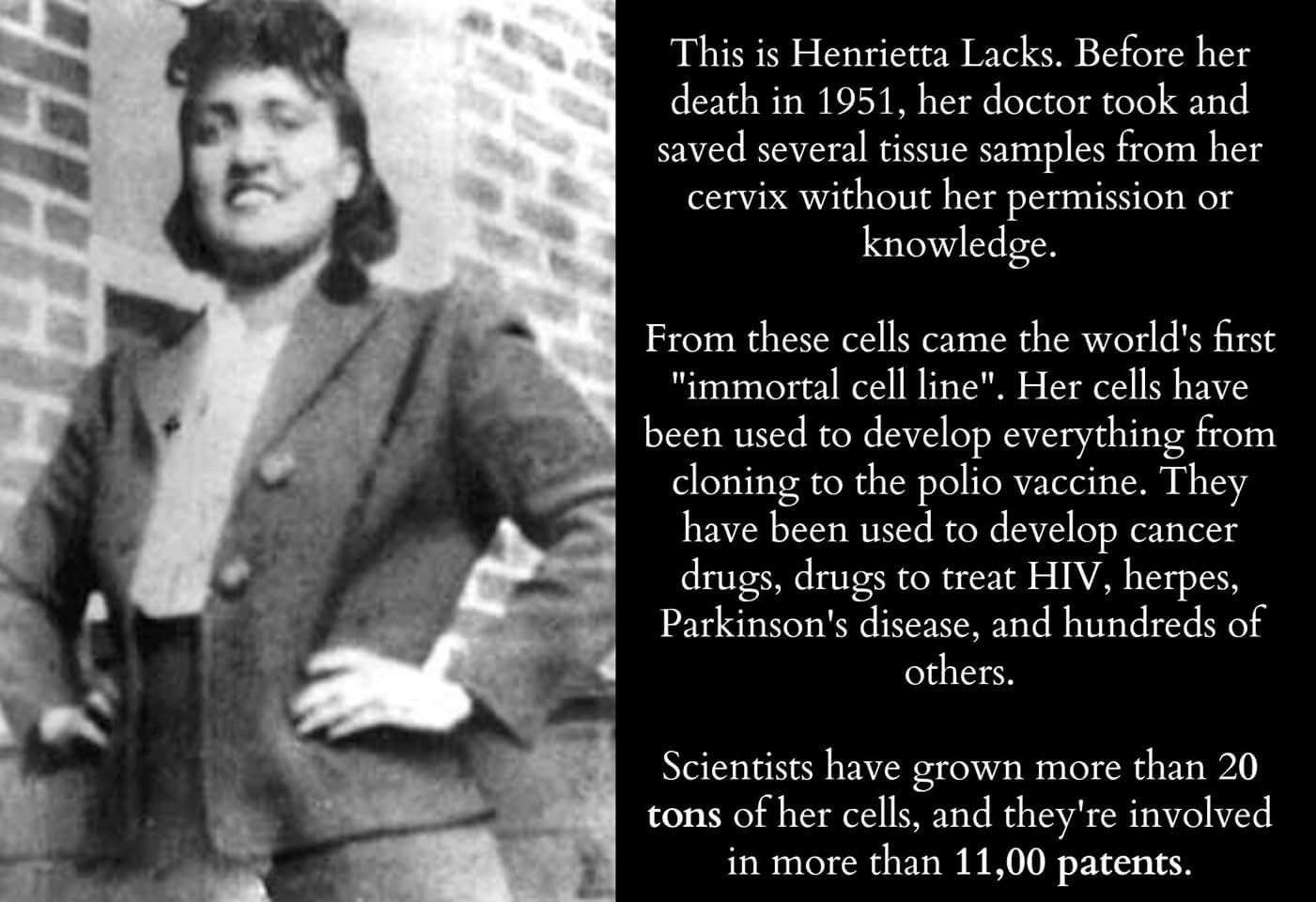

After giving her official consent for any treatments or surgery the doctors deemed necessary, Henrietta was once again led to the Johns Hopkins ward for colored women. Because she didn’t really have any other options, Henrietta gave the doctors her consent for receiving the treatments that they deemed necessary. Indeed, this radioactive material is so powerful that, when administered in high doses, it can even cause severe burns. But while radium is great for killing cancer cells, unfortunately, it can also destroy the healthy cells that it comes into contact with.

Back then, cervical cancer was treated at John Hopkins with radium - a highly radioactive material. When her doctors had the results of the biopsy, Henrietta learned that she was suffering from a very aggressive type of cervical cancer - stage I epidermoid carcinoma. For a while at least, Henrietta’s life continued its regular course. After her check-up, Henrietta returned to her daily routine of cooking for the family, looking after the children, and cleaning the house without putting too much thought into her medical examination. Henrietta was sent home after the doctors took a sample of her lump and sent it to the pathology lab for diagnosis. In the early 1950s, about a decade later, Henrietta walked into a gynecology examination room, where doctors found a lump on her cervix. In the hope of a better life, they decided to move to Sparrows Point, near Baltimore. Because times were very difficult for small tobacco farmers, Day and Henrietta were struggling financially. Soon enough they had children of their own. The two cousins had a very strong bond and they ended up getting married when Henrietta was 20. Although children used to work a lot back in the day, Henrietta found the time to play with her cousin Day. Henrietta’s family worked on a tobacco farm, so she had to help out by doing different tasks such as hauling the leaves to South Boston and harvesting the plants. In the 1920s, in a small town called Roanoake, a small black girl who would forever change medical science was born. The Immortal Life Of Henrietta Lacks Key Idea #1: A poor black American woman by the name of Henrietta Lacks dies of a very aggressive form of cancer. why there’s a clear tension between the medical industry and black Americans.why owners of plantations would often spread rumors among their slaves that doctors might abduct them in the middle of the night and.why doctors keep our cells in storage for years even if we only visited for a routine checkup.

why cell strands have become essential to medical research and what their value is.Here are some of the most important things that we’ll discuss throughout our summary of Rebecca Skloot’s The Immortal Life Of Henrietta Lacks: After reading our summary, you’ll understand why Skloot’s The Immortal Life of Henrietta Lacks is a must-read, especially if you are interested in black American history, medical history, and in gene patenting and cell research. Throughout the book, we will also learn more about gene-patenting and about the cell-culture industry. In addition to discussing Henrietta’s difficult battle against a horrible disease - cancer, to which she unfortunately succumbed, the author also gives us amazing details about the history of the cells that ended up outliving Henrietta. Rebecca Skloot’s book tells the real story behind Henrietta Lacks and her extremely helpful cells. What is even more upsetting is that a lot of people who are aware that there’s a woman behind these cures often get her name wrong, referring to her as Helen Lane or Helen Lacks. But despite the fact that we can thank her cancer cures, seminal research on AIDS, and polio treatments, most of us don’t even know her name. Over the past century, Henrietta’s cells have been vital to many amazing medical advances. Until recently, the interesting life of Henrietta Lacks, a woman who became famous for her HeLa cancer cells donation, has been shrouded in mystery. Has The Immortal Life Of Henrietta Lacks by Rebecca Skloot been sitting on your reading list? Pick up the key ideas in the book with this quick summary.


 0 kommentar(er)
0 kommentar(er)
